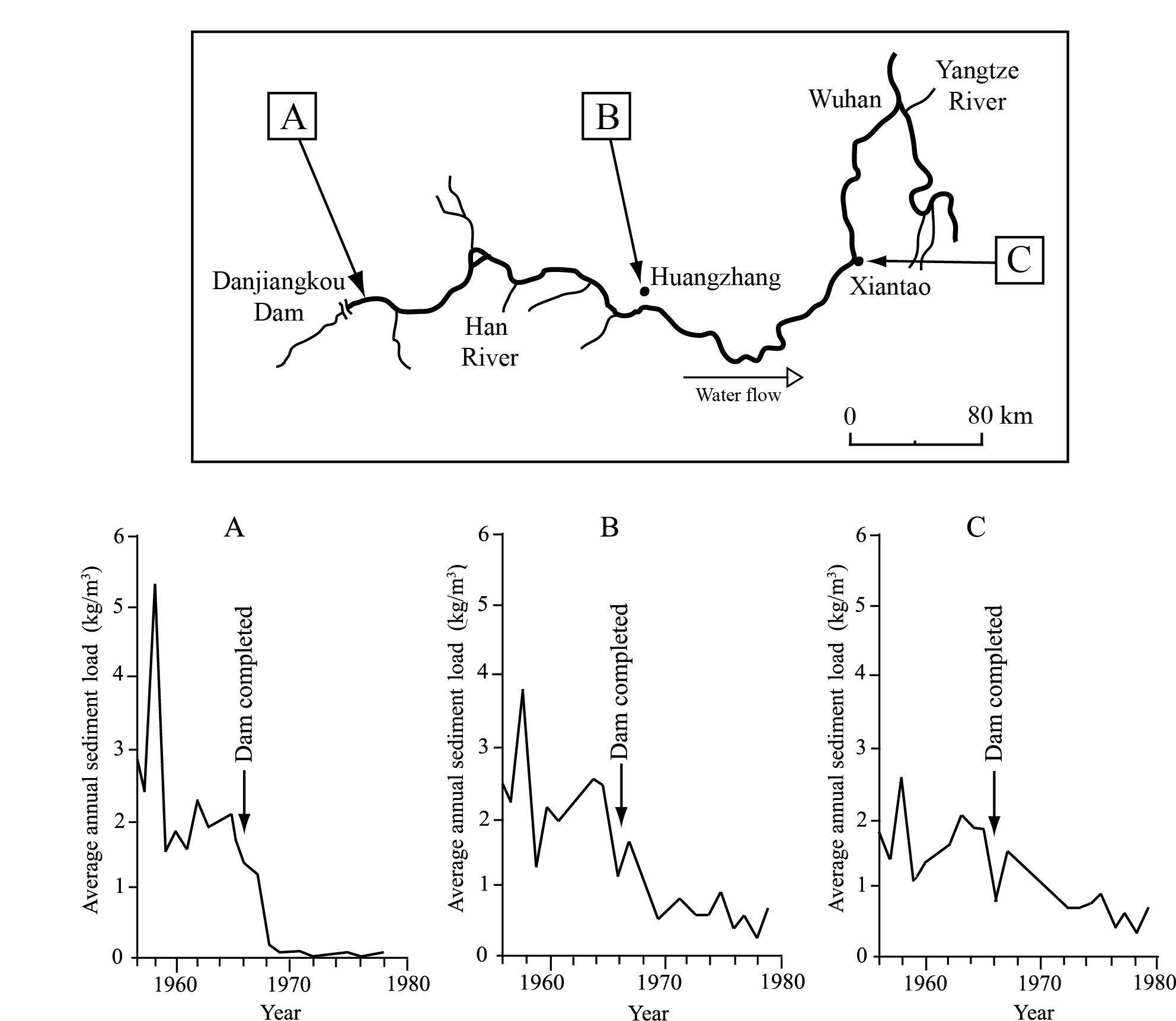| Date | Marks available | 10 | Reference code | .2.bp.1 | |
| Level | SL and HL | Paper | 2 | Time zone | |
| Command term | Examine | Question number | 1 | Adapted from | N/A |
Question
The map shows the location of the Danjiangkou Dam on the Han River in China. The graphs show the sediment loads at three places (A, B, C) downstream of the dam.

[Source: Nick Middleton (1999), The Global Casino, Arnold]
State the year when the highest sediment load occurred.
State the volume of sediment load in that year at Huangzhang.
Identify three ways in which the load of a river is transported and briefly describe one of these ways
Referring to the map and graphs, explain how the construction of the Danjiangkou Dam affected sediment loads along the Han River.
Examine the influences of physical factors and human activity on a specific river flood.
Markscheme
1958.
Accept answers from 3.7 – 3.8 kg/m3 inclusive. Units are required.
Answers are likely to be solution; suspension; bed load (though it is equally acceptable for candidates to identify more than one type of bed load movement).
Award 1 mark for two correct ways, 2 marks for three correct ways, with the remaining 1 mark reserved for an appropriate description of one of the ways.
Candidates are expected to describe that, following construction of the dam, sediment load decreased [1 mark] and that sediment flows became less variable [1 mark]. A third mark should be awarded for any recognition that either sediment load or the variability of sediment load diminished more at sites close to the dam than further downstream. The final 2 marks should be reserved for statements explaining these trends or patterns by reference, for example, to the reduction in peak water flows following dam construction, or to the impact of the dam acting as a sediment trap.
Other valid statements can be credited.
Both physical factors (such as the size and shape of the drainage basin; the amount and intensity of precipitation) and human activity (such as land clearance, location of housing, dam construction, flood defences) play a part in river floods, though the balance between the two will vary, depending on the specific river flood chosen.
Answers that examine a specific river flood are likely to be credited at band D and above. It is not necessary for physical factors and human activity to be treated equally. Answers considering both aspects of the question in some detail are likely to be credited at bands E/F.
It is expected that responses will examine one specific river flood, which can be at any scale.
Marks should be allocated according to the markbands.

